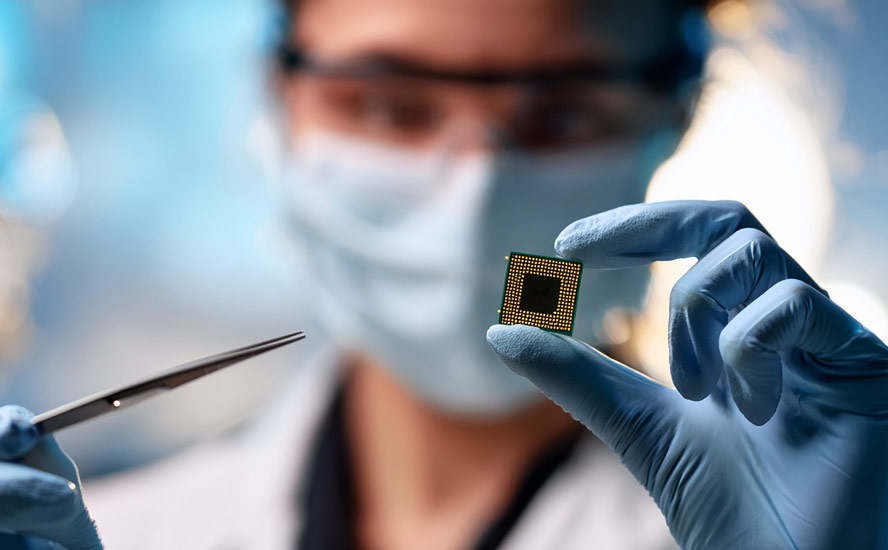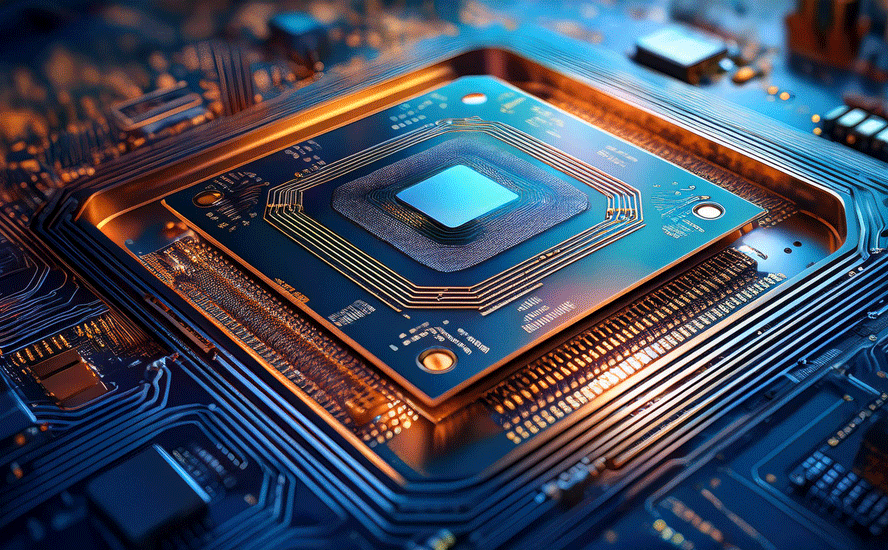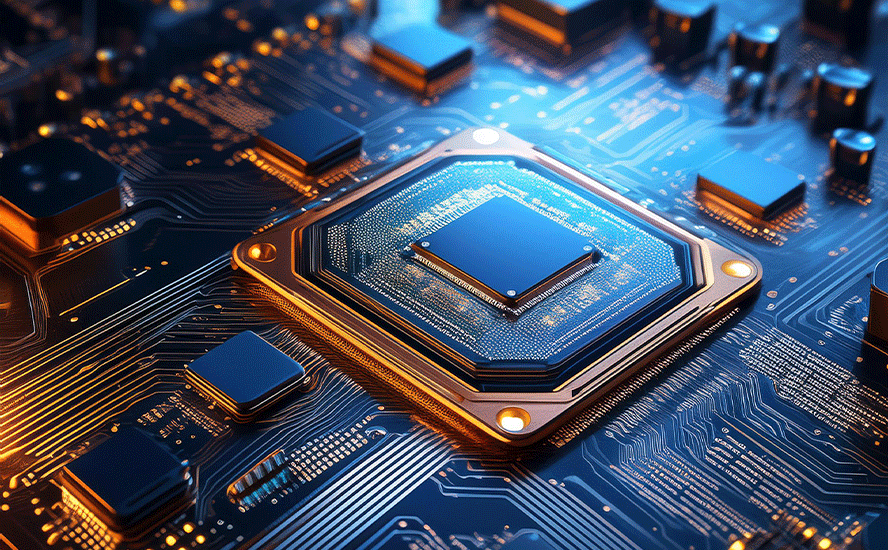Dawn of the cyborgs – Richard Mills
2022.10.06

‘The Six Million Dollar Man’ Steve Austin, played by Lee Majors, is an astronaut who is seriously injured when his spaceship crashes. Austin undergoes a government-sanctioned surgery, which rebuilds several of his body parts with machine parts, making him cyborg-like. When Austin recovers, his “bionic” parts give him superhuman strength, speed and sight. With these powers, Austin goes to work for the Office of Scientific Information, battling evil for the good of humanity. The popular 1970s television program spun off a second TV series, ‘The Bionic Woman’ starring Lindsay Wagner.
‘The Terminator’ series of action films stars Arnold Schwarzenegger as a cybernetic organism (cyborg), programmed from the future to go back in time and kill the mother of the scientist who leads the fight against Skynet, an artificial intelligence system that will cause a nuclear holocaust.
Terrifying and at times comical (“I’ll be back”, “Hasta la vista, baby”), The Terminator cyborg was among the first presentations of artificial intelligence (AI) to a global audience. The robotic assassin also depicted an extreme scenario of what could happen when “machine learning”, a vital element of AI, runs amok — i.e. when machine intelligence surpasses human intelligence to the point when the machines take over and try to eliminate the humans who created them.
‘Schismatrix’ is a science fiction novel by Bruce Sterling published in 1985. The story revolves around the Shaper/ Mechanist universe, where the main character, Abelard Lindsay, is born into a family of aristocratic Mechanists, who use Mechanist technology to prolong their lives. However, after giving his loyalty to the Shapers, Lindsay and two others influence the younger generation in their pursuit of Preservationism, a movement devoted to preserving human culture.
All three examples are works of fiction set far into the future, when our civilization has, to some degree, integrated elements of robotics, machine learning and artificial intelligence into the human body.
Seem far-fetched? Maybe. But there is growing evidence, not only that human cyborgs already exist, they are just the beginning of a new technology with powerful implications for military and civilian life.
One of the most promising applications is using brain signaling to control devices. In 2013 researchers from the Rehabilitation Institute of Chicago demonstrated a cybernetic arm prosthetic that according to Defense One, “functions like something straight out of RoboCop.”

The BTO will oversee a variety of programs aimed at understanding the hardware and software of the human brain, including a DARPA program, Revolutionizing Prosthetics, to better help veterans with amputated limbs control prosthetic legs and arms with brain signals.
While researchers have yet to connect a prosthetic directly to the brain, they have achieved much better integration between prosthetics and nerves. The technology could include the creation of chips and devices that mimic the brain.
Another potential application is neural-controlled piloting of drones, building off current research using electroencephalography, or EEG, to pilot robots. Twelve years ago at Northwestern University, researchers successfully operated a robotic vacuum cleaner using thoughts, and in 2012, Chinese scientists used EEG to pilot a small drone.
According to Defense One, DARPA also wants to create new biological structures for artificial purposes out of the “building blocks of life”; and is looking at making new diagnostic gadgets and software to give soldiers and decision-makers “a rapid and specific diagnosis of infection so we can actually understand the spread of disease, something we don’t have visibility into right now.”
Bioengineered materials derived from living components like lipids and proteins would be several times more diverse and functional than designs based on more traditional approaches to chemistry. Learning to harness the building blocks of life could allow for living materials that are stronger, more flexible, more durable and cheaper than anything available today. Those new materials could make their way into battlefield armor or even electronic components.
Fast forward to 2019, when the Department of Defense changed its communication around cybernetic organisms from “human cyborg” to the softer and gentler-sounding “human enhancement”.
According to a DoD press release, Peter Emanuel, Ph.D., the Army’s Senior Research Scientist for Bioengineering, sees a future 30 years from now where a U.S. Soldier can direct a swarm of drones in battle through a direct brain-to-machine connection using a neural implant. The implant also allows him to see exactly what each of those drones is seeing, then digitally integrate this information in his brain and send it as data to other machines, fellow Soldiers or his command and control element.
A May, 2021 article in The Defense Post has US Space Force Chief Scientist Joel Mozer saying “In our business of national defense, it’s imperative that we embrace this new age, lest we fall behind our strategic competitors.”
Now for the scary part. Mozer added that quote unquote unprecedented developments are taking place including artificial intelligence, which will allow the military to craft tactics and strategies that “no human could.”
Autonomous programs will eventually provide real-time advice to commanders, and multiple autonomous agents will be able to assist commanders and decision-makers in reconnaissance and fire control.
Is this starting to sound like the moment in The Terminator when Skynet becomes self-aware and starts targeting humans for extinction?
The chief scientist further explained that human augmentation will eventually develop into technologies such as augmented reality and virtual reality — including “nerve stimulation” to enhance the simulation of physical sensations.




In 2019 a Department of Defense study predicted that enhanced vision and hearing, musculature control and telepathy — transmitting one’s thoughts from one mind to another without the use of senses of physical contact — would all become possible by 2050.
Titled ‘Cyborg Soldier2050: Human/Machine Fusion and the Implication for the Future of the DOD’, the report highlights four technologies:
- “Ocular enhancements, to imaging, sight, and situational awareness.” One possibility is replacing bulky night vision goggles with contact lenses with the same capability. The contacts could even have a digital zoom that uses augmented reality to project critical data onto the wearer’s field of view.
- “Restoration and programmed muscular control through an optogenetic bodysuit.” Such a suit could rejuvenate tired muscles, refreshing soldiers on active duty faster.
- “Auditory enhancement for communication and protection.” Hearing is critical on the battlefield but hearing loss is a big problem in the military. Noise-canceling ear protection to screen out the din of weapons could be replaced by smaller devices.
- “Direct neural enhancement of the human brain for two-way data transfer.” The holy grail of cyborg technology, telepathy would revolutionize the battlefield, allowing soldiers to instantly share information without the use of communications devices.
“This technology is predicted to facilitate read/write capability between humans and machines and between humans through brain-to-brain interactions,” an executive summary reads. “These interactions would allow warfighters direct communication with unmanned and autonomous systems, as well as with other humans, to optimize command and control systems and operations.”
The Pentagon predicts a world where “enhanced” soldiers can identify targets in “dense, urban environments or subterranean megacities that will challenge identification and tracking of targets.” Disturbingly, However, many of these enhancements would likely only occur after a soldier is injured. That’s because it would be hard to convince a healthy soldier to allow intervention on such a delicate area as the eye.
“Ocular enhancement would be an attractive medical option in situations where the eye tissue has been damaged or destroyed by injury or disease,” the researchers said.
The same goes for enhancing muscles. “The most likely [use] would be in the restoration of lost function due to injury of muscles or nerves,” the study said, adding that musculoskeletal injuries are the second leading cause of lost duty time in the US Armed Forces.
Researchers said the Pentagon would enhance weak tissue with a “network of emplaced subcutaneous sensors that deliver optogenetic stimulation through programmed light pulses.” Optogenetics stimulates muscle tissue, or even neurons, with light instead of electricity.
According to the study, covered by Vice, this could allow wounded soldiers to return to battle with cybernetic muscles that operate better than their meat alone did. It could also allow them to control external tools such as drones and weapons systems not directly attached to their body. Or let someone else control them remotely.
The optogenetic controller would, in effect, take control of the motions of a warfighter’s limbs, thereby allowing a novice (i.e., the warfighter) to perform functions professionally.”
Let that sink in for a moment. Rather than discharging injured grunts as weaker versions of themselves, the Army could begin to see a wound as an opportunity, for employing cybernetics to turn a novice soldier into a battle-hardened killing machine.
Cybernetic ears are another area that holds enormous potential. The study imagines that future advances won’t just improve hearing, but allow for the “conversion and transmission of these signals to others across distances.” In other words, says Vice, people could use cybernetic ears to access a network of voices and communication only perceptible to them. It’s like implanting your smartphone inside your ear, complete with real-time translation features for foreign languages.
As for the crown jewel of cybernetic enhancement, direct interface between the human body and machines, the Pentagon’s study says that humans with neural implants would have the ability to control machines, have machines control them, and control each other.
“The enhancement would not simply entail user control of equipment (brain to machine) but also transmission to operator (machine to brain) and human to human (command and control dynamics) to enhance situational awareness as drone, computational analytical, and human information is relayed to the operator,” it said.
In Vice’s words, Cybernetically enhanced soldiers could control drones and complicated weapon systems remotely with the power of their mind.
Of course, the revolutionary nature of cybernetic technology does not come without its downsides. At issue is whether the adoption of technology has outpaced the legal and ethical frameworks that govern society.
“If an enhanced warfighter is caught and captured, does he have the same protections under the Geneva Convention, and will his enhanced status alter the treatment he is likely to receive?” researchers asked.
Basic questions of national security are relevant, such as whether cyborgs can be hacked, and what kind of encryption should be used.
Army Times notes it’s after 2050 that the implications of cyborg capabilities becomes concerning.
The study group therefore proposed seven recommendations for the Pentagon to consider. Listed in no particular order, they are:
- DOD personnel must conduct global assessments of societal awareness and perceptions of human/machine enhancement technologies.
- US leadership should use existing and newly developed forums (e.g., NATO) to discuss impacts to interoperability with allied partners as we approach the year 2050. This will help develop policies and practices that will maximize interoperability of forces.
- DOD should invest in the development of dynamic legal, security, and ethical frameworks under its control that anticipate emerging technologies.
- Efforts should be undertaken to reverse negative cultural narratives of enhancement technologies.
- DOD personnel should conduct tabletop wargames and targeted threat assessments to determine the doctrine and tactics of allied and adversarial forces.
- The US government should support efforts to establish a whole-of-nation approach to human/machine enhancement technologies versus a whole-of-government approach.
- The DOD should support foundational research to validate human/machine fusion technologies before fielding them and to track the long-term safety and impact on individuals and groups.
Conclusion
The saying, “Truth is stranger than fiction” is appropriate when it comes to the development of cybernetic technology.
Ideas that were once the purview of science fiction novels and dystopian movies are now available, or being developed in secret by the military. The question is how quickly they will move forward and to what ends they will be used.
The study group authoring the above-mentioned study says that these capabilities will probably “be driven by civilian demand” such as brain-signaled prosthetic limbs, and “a robust bio-economy that is at its earliest stages of development in today’s global market.”
But let’s be clear. Their real potential lies on the battlefield. I agree with Vice’s conclusion that these enhancements, in some form, are coming. They may not look exactly like what the Pentagon predicts here, but powerful people want them to happen. Billionaires want them to happen. The U.S. Military wants them to happen. The sad truth is that most moral, ethical, and legal considerations will likely be defined after the fact.
Richard (Rick) Mills
aheadoftheherd.com
subscribe to my free newsletter
Follow me on Twitter
Legal Notice / Disclaimer
Ahead of the Herd newsletter, aheadoftheherd.com, hereafter known as AOTH.
Please read the entire Disclaimer carefully before you use this website or read the newsletter. If you do not agree to all the AOTH/Richard Mills Disclaimer, do not access/read this website/newsletter/article, or any of its pages. By reading/using this AOTH/Richard Mills website/newsletter/article, and whether you actually read this Disclaimer, you are deemed to have accepted it.
Any AOTH/Richard Mills document is not, and should not be, construed as an offer to sell or the solicitation of an offer to purchase or subscribe for any investment.
AOTH/Richard Mills has based this document on information obtained from sources he believes to be reliable, but which has not been independently verified.
AOTH/Richard Mills makes no guarantee, representation or warranty and accepts no responsibility or liability as to its accuracy or completeness.
Expressions of opinion are those of AOTH/Richard Mills only and are subject to change without notice.
AOTH/Richard Mills assumes no warranty, liability or guarantee for the current relevance, correctness or completeness of any information provided within this Report and will not be held liable for the consequence of reliance upon any opinion or statement contained herein or any omission.
Furthermore, AOTH/Richard Mills assumes no liability for any direct or indirect loss or damage for lost profit, which you may incur as a result of the use and existence of the information provided within this AOTH/Richard Mills Report.
You agree that by reading AOTH/Richard Mills articles, you are acting at your OWN RISK. In no event should AOTH/Richard Mills liable for any direct or indirect trading losses caused by any information contained in AOTH/Richard Mills articles. Information in AOTH/Richard Mills articles is not an offer to sell or a solicitation of an offer to buy any security. AOTH/Richard Mills is not suggesting the transacting of any financial instruments.
Our publications are not a recommendation to buy or sell a security – no information posted on this site is to be considered investment advice or a recommendation to do anything involving finance or money aside from performing your own due diligence and consulting with your personal registered broker/financial advisor.
AOTH/Richard Mills recommends that before investing in any securities, you consult with a professional financial planner or advisor, and that you should conduct a complete and independent investigation before investing in any security after prudent consideration of all pertinent risks. Ahead of the Herd is not a registered broker, dealer, analyst, or advisor. We hold no investment licenses and may not sell, offer to sell, or offer to buy any security.
Legal Notice / Disclaimer
Ahead of the Herd newsletter, aheadoftheherd.com, hereafter known as AOTH.Please read the entire Disclaimer carefully before you use this website or read the newsletter. If you do not agree to all the AOTH/Richard Mills Disclaimer, do not access/read this website/newsletter/article, or any of its pages. By reading/using this AOTH/Richard Mills website/newsletter/article, and whether you actually read this Disclaimer, you are deemed to have accepted it.


























